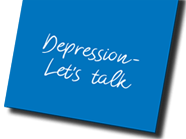Suicidal risk
Depression and suicide are strongly linked, with up to 10-15% of patients with severe and recurring depression eventually dying by suicide. Between 40 and 70% of depressed patients have suicidal thoughts, and 90% of people dying by suicide had suffered from a mental disorder, most often depression. Indicators for acute suicide risk include direct and indirect announcements of suicide.
Suicidal thoughts and acts are a topic that you may find uncomfortable to address. If you feel it is useful, and the patient seems to be willing to disclose his thoughts, try to create a private atmosphere, for example by bringing the customer towards a part of the pharmacy where they cannot be overheard by other customers. However, if you have the feeling that a person is seriously thinking about harming him- or herself, it is best to refer this person to urgent medical assessment, and you can call 999 or 112 if needed.
Medication use in suicides and suicide attempts
Overdose involving psychopharmacological drugs is a frequent and common method used in suicides both to cause death directly and to facilitate the individual’s use of more lethal means such as jumping from height, drowning or hanging.
Intoxication with medication in suicide attempts is ranking first for both men and women. Access to medication through primary care or over the counter is an important factor. Most frequently used are hypnotics and tranquilizers, but also analgesics play an important role. In some countries, package sizes have been restricted to avoid having a single package containing a potentially harmful or lethal dosage. As a pharmacist you can help to avoid the misuse of medication by being attentive and talking to the patient if large quantities of medications are requested. Care should be taken especially if a patient is prescribed drugs that have high lethality at low doses (e.g. tricyclics, lithium).



